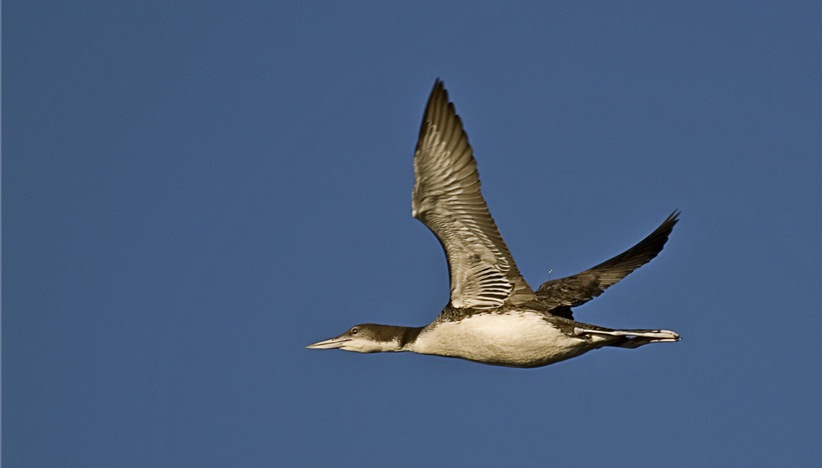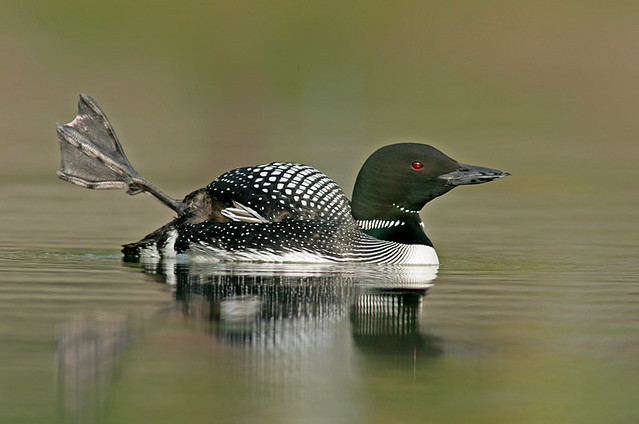Loons, also called “divers,” have
distinctive breeding and winter plumages, which can make identification
difficult. They have small wings (and
thus high wing loading), short legs, and heavy bodies with webbed feet that are
set back. They have pointed bills that
are used to catch fish while diving.
Summer plumages are brightly colored and patterned, and loons swim very
low in the water. Males and females
have identical plumages, but males are larger on average
Loons were classified in the same
order as grebes (collectively known as Colymbiformes) until the 1930s, when it
was determined that morphological similarities were due to convergent evolution
instead of common ancestry. Grebes were
moved to Podicipediformes, while loons went to Gaviiformes.
 |
| Common loon in flight. |
 |
| Red-throated loon swimming low in the water. |
 |
| Common loon diving. |
 |
| Webbed foot of common loon. |
 |
| Baby common loon on mother's back. |
Sources:
- Alderfer, Jonathan. 2006. Complete Birds of North America, pp. 58-61. National Geographic, Washington, D.C.
- Peterson, Roger Tory. 2010. Peterson Field Guide to Birds of Eastern and Central North America, 6th Edition, pp. 58-59. Houghton Mifflin Harcourt, Boston and New York.





Cool stuff Michele! Was the grebe/loon split due to DNA evidence or did the split happen prior to the major DNA study done in 1990? Also, do you think that loons are moving towards flightlessness?
ReplyDelete